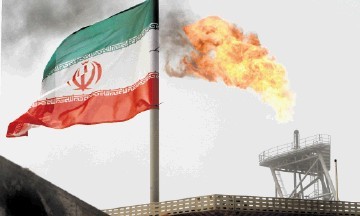
Iran’s quest to rejuvenate its energy industry after decades of sanctions is attracting renewable energy developers eager to plant turbines on windy ridges across the country.
Since 2012 the government has pushed renewables as an alternative to the fossil fuels that supply 94 percent of its electricity. Developers such as GI Umweltconsult and turbine suppliers including Nordex SE are preparing to enter the market.
While Iran’s renewables industry is concentrated mainly on hydro plants, the government plans to bolster wind as a way of preserving crude oil for export, and feeding the electricity needs of its more than 80 million people.
With an ambition to install 5 gigawatts of renewable capacity by 2020, Iran would rank alongside France and the UK as an industry leader.
“Every kilowatt-hour of extra wind power allows them to export more oil, meaning more foreign currency,” Michael Tockuss, managing director of the German-Iranian Chamber of Commerce, said in an interview in Hamburg.
The prospect of those sanctions being lifted after the nuclear deal the US and five other nations signed on July 14, is breathing new life into energy developments of all kinds.
Royal Dutch Shell Plc and BP Plc were among the first oil majors to say they’re interested in working Iran’s fields, which the government estimates need $200 billion of investment.
Umweltconsult, a renewable energy developer based in Berlin, is planning wind farms requiring investment of 300 million euros ($331 million) in Iran starting next year, Shahnaz Horvath, co-head of the company, said in an interview.
“A decade ago, most Iranians still asked, ‘What do we need wind and solar energy for,’” said Horvath, who grew up in the Iranian city of Avraz before moving to Germany three decades ago. “Things have changed.”
Iran’s wind energy potential is estimated at more than 30,000 megawatts, Mohammad Saeid Hojjati, economic counselor at the Iranian Embassy in Berlin, said by e-mail. There is “huge potential” for electricity generation from different renewable sources including wind and solar, he said.
Iran’s government set its renewable energy target in 2012 and has just 150 megawatts of clean power plants operating now. It adopted Germany’s feed-in-tariff model 10 years ago, granting developers a fixed price for electricity from renewables, and recently boosted the payout for wind by 3.9 percent to 5,300 rials (18 cents) per kilowatt-hour.
“We haven’t had a lot of progress so far because of sanctions and banking curbs,” said Mostafa Rabiei, head of international and promotional affairs at Iran’s Renewable Energy Organization, which is linked to the energy ministry. “We put in place regulations so the private sector is encouraged.”
With about 1,000 megawatts of new capacity planned a year, Iran’s onshore wind market may compare with France and the UK, said Oliver Kayser, spokesman for the German turbine maker Nordex SE.
The two European markets have contributed installation of about that much in most years for most for the last decade, according to data compiled.
“Iran does have some high-wind locations, for example in the mountainous regions north of Tehran,” said David Hostert, an analyst for Bloomberg New Energy Finance in London.
Denmark’s Vestas Wind Systems A/S is eager to explore the Iranian market, said Michael Zarin, a company spokesman. The biggest turbine maker has installed 37 of its machines in the country, most recently in 2004, according to its website.
Banks may be willing to lend to Iran again, once payment systems are restored and sanctions are lifted, said Ludovic Subran, chief economist at Euler Hermes Group, the world’s biggest trade-credit insurer.
“In the long-term, there is no reason why they shouldn’t do business there,” Subran said.
Horvath of Umweltconsult isn’t waiting. She’s seeking 40 million euros to finance 47.3 megawatts of turbines that could be installed as early as next year near Abadan in southwestern Iran. Horvath said more developers will follow.
“Other German companies will manage as well,” she said. “There are enough Iranians to work with.”
Recommended for you
